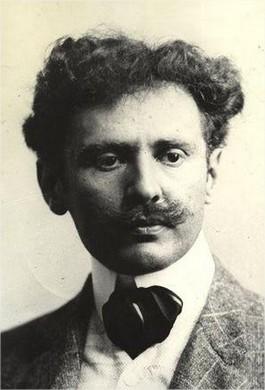 |
| by Juan Manuel Blanes |
By the time we got to the late 19th century and into the early 20th century, Uruguayan artists followed some of the artistic movements that we see happening in Europe around the same time. A few of the realist painters at the end of the 1800s include Joaquín Torres García and Juan Manuel Blanes. As the shift to the 20th century rolled out, artists shifted their art with it, encouraging nativist artists like Carlos María Herrera, post-impressionists like Felipe Seade and Pedro Figari, and even abstract artists like Carlos Páez Vilaró. Some artists like Vilaró worked in many different mediums, like sculpting, pottery, and mural painting. But he is probably most known for his livable sculpture, Casapueblo (this used to be his summer home and workshop in Punta Ballena).
 |
| Casapueblo |
The 20th century brought along quite a few sculptors including Juan José Calandria, Pablo Atchugarry, Águeda Dicancro, José Belloni, José Luis Zorrilla de San Martín, and Claudio Silveira Silvo.
 |
| by Pablo Atchugarry |
The vast majority of literature from Uruguay is written in Spanish. Montevideo seems to be a central hub for writers, but there are also a number of writers who hail from the northern parts of the country, too. One of the early forerunners in Uruguayan literature is the poet Bartolomé Hidalgo. He was a prominent writer of gaucho poetry, and in many ways was a pioneer in the genre, along with the Argentine poet Hilario Ascasubi. And you know you’ve made an impact on the literature of your country when there’s a literary prize named after you.
 |
| Julio Herrera y Reissig |
The Modernismo literary movement is one that reached across both Spain and Latin America. At its basis, the movement finds the beauty between language and the rhythms of the poetry on culture. It started with the Nicaraguan poet Rubén Darío and his book of poetry and stories called Azul… . In Uruguay, there are a few writers who followed this movement, namely Julio Herrera y Reissig (poet, playwright, essayist), Juana de Ibarbourou (poet, nominated for the Nobel Prize in Literature four times), and Delmira Augustini (poet, famous for writing about female sexuality; was married to Enrique Job Reyes, got divorced 10 months later only for him to show up a month after that and shoot her in the head and then kill himself).
 |
| Felisberto Hernandez was also a pianist. |
There are quite a few other Uruguayan writers in other genres who have made a name for themselves. These include Juan Carlos Onetti (short story writer, novelist), Felisberto Hernandez (writer, known for his style of magic realism), Eduardo Galeano (journalist, novelist), Jorge Majfud (writer, professor), Tomás de Mattos (writer, librarian), Mauricio Rosencof (journalist, playwright, poet), Horacio Quiroga (short story writer), Constancio C Vigil (known for his children’s stories), Florencio Sanchez (Uruguay’s prominent playwright), and Mario Benedetti (novelist, poet, journalist).
Up next: music and dance
Amazing!
ReplyDelete